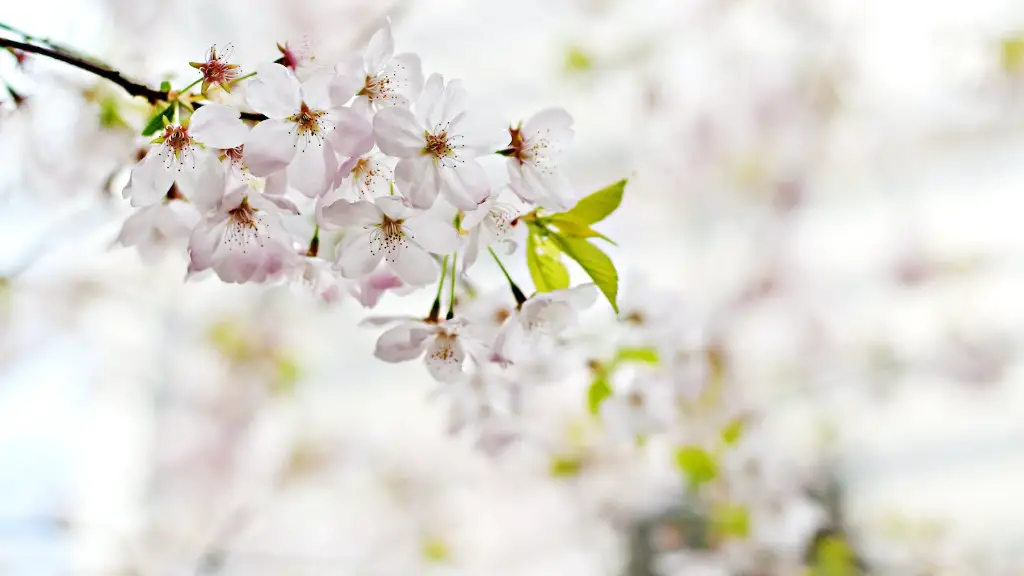Lemons are one of the most popular fruits in the world, but many people who have planted a lemon tree in their garden have found that they have not flowered. This is because the conditions that a lemon tree needs to flower and fruit are specific and hence, a lack of any of these conditions can lead to a non-flowering lemon tree.
The most important condition for a lemon tree to flower and fruit is the right temperature. Any temperature below 10 degrees Celsius will limit or stop the bloom of flowers. An extreme drop in temperature or frost can even damage the tree, interfering with its flowering or fruiting capabilities altogether. Additionally, it is best to keep lemon trees away from any windy or draught prone areas. This is especially true during winter, when the plants are dormant.
Furthermore, having a balanced diet of nutrients is essential for lemon trees to blossom well. The lemon tree must receive adequate amounts of nitrogen, phosphorus, and potassium to thrive. The soil for the lemon tree should be well-aerated, rich in organic matter, and slightly acidic (pH 5.2 to 6.3). A soil analysis can help to determine the best fertilizers and soil amendments for improving the nutrient content of the soil.
Lastly, lemon trees are known to be highly sensitive to over-watering and under-watering. Over-watering leads to excessive weed growth and can damage the roots of the tree. Similarly, under-watering can lead to wilted leaves and a decrease in flower formation. It is therefore important to keep the soil moist but not saturated at all times.
How Light Impacts Flowering of Lemon Trees
Light is an additional factor that impacts the flowering of a lemon tree. Lemon trees require a lot of sunlight, both during the summer and winter. Providing at least 8 to 10 hours of direct sunlight a day is essential, as this helps to promote blooming. If this is not possible, then a few hours of bright indirect sunlight may suffice. It is also important to keep in mind that during the winter, lemon trees require more sun than during the summer, as the lack of sunlight would lead to lack of blooming.
Moreover, the amount of light in the day can also lead to flowering. Lemon trees respond to the changing amount of day light throughout the year. This means that when the days are getting longer, and the nights shorter, then the lemon tree will respond with more blooms. Similarly, when the days and night lengths start to reverse, this would also mean that blooming of the lemon tree would start to decrease.
Lastly, when first planting a lemon tree, it is recommended to only purchase plants that possess healthy looking foliage. You should inspect the lemon tree carefully, checking for any evidence of disease and pests. Specifically, check the foliage on the limbs and leaves, as this will give you an indication of the overall health of the tree. If a lemon tree is healthy, then it is more likely to produce blooms accordingly.
Other Reasons Why a Lemon Tree is not Blooming
Aside from temperature, light, soil quality and water needs, there are some other reasons why a lemon tree might not be flowering. Firstly, it is essential to choose the right variety of lemon tree, as some lemon tree varieties are more suited for the climate that one lives in. Additionally, the size of the tree can also have an impact on the blooming, as sometimes trees that are too tall need more sun exposure that is not possible in certain garden spaces. Lastly, choose an appropriate pot and ensure that the drainage of the pot is appropriate, as this is essential for blooming as well.
While there are various reasons why a lemon tree is not blooming, it is possible to identify and rectify the underlying issues which are preventing it from flowering. By following the advise above, you should be able to restore the blooming capabilities of your lemon tree.
When to Expect Blooms on a Lemon Tree
The natural flowering season of lemon trees usually begins in late winter or early spring, when the days start to become longer. Blooming will usually continue till late spring and almost all lemon trees that have been adequately cared for should have blooms during this time. However, it is not uncommon for a lemon tree to go through a few blooming cycles throughout the whole year, especially when the conditions remain ideal.
It is advisable to prune the lemon tree before and during the blooming season. This will encourage the lemon tree to grow and can also help improve its vigor. Additionally, when pruning a lemon tree make sure not to prune too much. Pruning too much can reduce flower production, as it exposes smaller buds that are more vulnerable to cold weather.
Use of Artificial Pollination for Lemon Trees
If a lemon tree is not producing flowers, then it may be necessary to use artificial pollination techniques. This is necessary when the number of bees present in the area is not adequate enough to pollinate the flowers or when cross pollinators are not available. Artificial pollination involves manually transferring pollen from the anthers to the stigma of the same flower or another flower of the same plant. It is important to note that this should only be done when necessary, as it can become very labor intensive and is not recommended for large numbers of plants. Additionally, it is important to ensure that the pollen is adequately dried before transferring it.
To ensure better coverage, it is also important to use a variety of techniques. One common technique is the use of a soft brush, where the pollen is transferred from the anthers of a flower to the stigma of another flower of the same plant. Additionally, the use of a paintbrush or natural sponge can also be effective. Furthermore, a method called ‘bagging’ can also be used, where a plastic bag is tied around an open flower, to prevent pollen from spreading to other flowers.
Other Methods to Encourage Flowering of Lemon Trees
In addition to ensuring the necessary conditions for a lemon tree to flower, there are some other methods that can also be used to encourage lemon tree flowering. Applying fertilizers during the blooming season can help support the production of flowers and fruits. Additionally, mulching with organic matter can also help to retain the moisture of the soil, thereby encouraging healthy growth and more frequent flowering.
Finally, regular pruning of the lemon tree can also be beneficial. Any dead, weak or damaged branches should be trimmed off, as this can help to stimulate the growth of new shoots, resulting in more fruit production. Pruning also helps to shape the lemon tree and can result in better airflow and sunlight exposure, leading to increased flower production as well.



